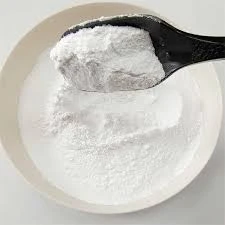
វិច្ឆិកា . 15, 2024 00:59 Back to list
what is hydroxypropyl methyl cellulose
Hydroxypropyl Methyl Cellulose (HPMC) is a versatile and widely used cellulose derivative that plays a significant role in various industries, including pharmaceuticals, food, cosmetics, and construction. This non-ionic water-soluble polymer is derived from cellulose, a natural polymer found in the cell walls of plants. Its unique properties make HPMC an essential ingredient in many products, improving their performance and functionality.
One of the primary characteristics of HPMC is its ability to form a gel-like consistency when mixed with water. This property is crucial in many applications, particularly in the pharmaceutical field, where it serves as an effective thickening agent, stabilizer, and film-forming agent. In drug formulations, HPMC is often employed in controlled-release tablets, where it helps regulate the release of the active pharmaceutical ingredients (APIs) into the bloodstream. This controlled release ensures that medications are delivered steadily over time, enhancing therapeutic efficacy and patient compliance.
In the food industry, HPMC is commonly used as a food additive and starch substitute due to its thickening and emulsifying properties. It is found in various products, including sauces, salad dressings, and low-fat foods, where it helps improve texture and mouthfeel without adding unwanted calories. Furthermore, HPMC is recognized for its ability to retain moisture, which helps extend the shelf life of food products by preventing them from drying out.
The cosmetic industry also benefits from HPMC, as it is often included in skincare and haircare formulations. Its thickening and film-forming properties allow for better product consistency and stability. As a result, HPMC is common in creams, lotions, and gels, where it contributes to a smooth application and enhances the sensory experience for consumers. Additionally, due to its biocompatibility, HPMC is considered safe for use in cosmetics, making it a popular choice among formulators seeking natural ingredients.
what is hydroxypropyl methyl cellulose

In construction, HPMC is utilized as an additive in cement, mortar, and other building materials. When added to these mixtures, HPMC improves workability, enhances water retention, and increases adhesion properties. This results in better application, longer open times, and improved finish quality, which are all crucial for construction projects. Additionally, HPMC helps in preventing cracking and shrinkage in cement-based products, contributing to the durability of structures.
One of the significant advantages of HPMC is its availability in various grades, each tailored to specific applications. These grades differ in viscosity, thermal gelation properties, and solubility, allowing manufacturers to select the most suitable type for their products. This versatility makes HPMC a valuable ingredient across many sectors.
Furthermore, HPMC is regarded as a sustainable option, as it is derived from natural cellulose sources and is biodegradable. In an era where consumers are increasingly concerned about environmental sustainability, the use of HPMC aligns with the growing demand for eco-friendly products.
In conclusion, Hydroxypropyl Methyl Cellulose is a multifunctional ingredient with extensive applications in pharmaceuticals, food, cosmetics, and construction. Its unique properties, such as thickening, emulsifying, and film-forming capabilities, make it an invaluable component in various formulations. As industries continue to prioritize sustainability and functionality, the importance of HPMC is expected to grow, further solidifying its place as a cornerstone in modern formulation science.
-
Why HPMC is a Key Additive in Wall Putty Formulations
NewsAug.05,2025
-
Redispersible Powder in Decorative Renders: Function Meets Finish
NewsAug.05,2025
-
Redispersible Powder for Interior Wall Putty: Smooth Results Every Time
NewsAug.05,2025
-
HPMC’s Water Retention Capacity in Dry Mortar Applications
NewsAug.05,2025
-
HPMC Factory Contributions to Liquid Detergents
NewsAug.05,2025
-
How HPMC Factory Products Change Detergent Textures
NewsAug.05,2025







